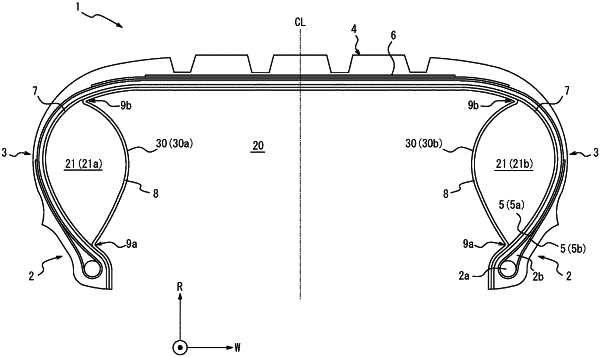| CPC B60C 5/22 (2013.01) [B60C 17/01 (2013.01); Y10T 152/10585 (2015.01); Y10T 152/10612 (2015.01)] | 13 Claims |

|
1. A multi air chamber tire comprising:
a tread portion;
a pair of bead portions;
a pair of sidewall portions extending between the tread portion and the pair of bead portions; and
partition walls respectively provided to half portions of a tire which are defined with respect to a tire equator plane, the partition walls partitioning an inner cavity of the tire to form a plurality of air chambers disposed adjacent to each other, wherein
each of the partition walls includes a first coupling portion coupled with a tire inner wall surface, and a second coupling portion coupled with the tire inner wall surface at a position outward of the first coupling portion in a tire radial direction,
in a state where the tire is filled with fluid, a first air chamber is formed in a space located at a position inward of the partition walls in a tire width direction, and a second air chamber is formed in each space located between a partition wall of the partition walls and the tire inner wall surface of a sidewall portion of the pair of sidewall portions, and
in each partition wall, the second coupling portion is coupled with the tire inner wall surface at a position outward of a respective ground contact edge of the tread portion in the tire width direction and inward of a respective maximum width position of a belt provided in the tread portion in the tire width direction by 10% to 20% of a maximum width of the belt.
|